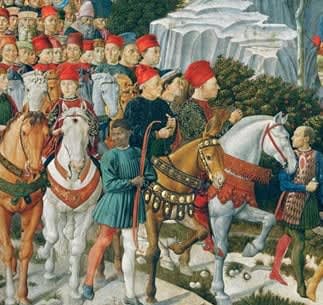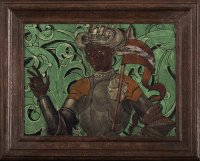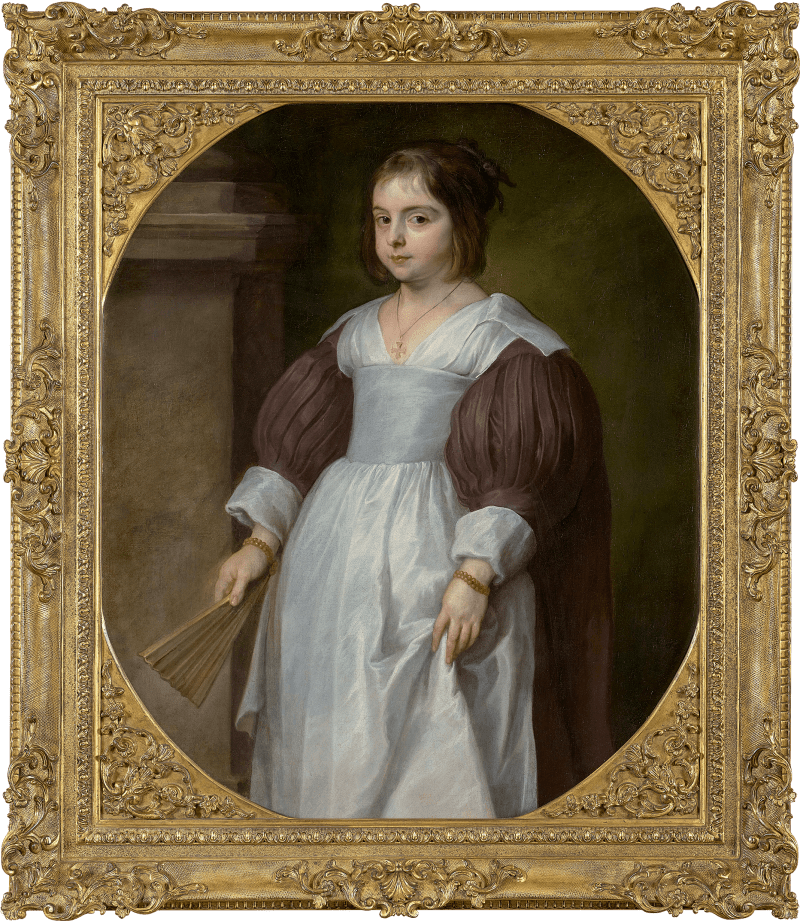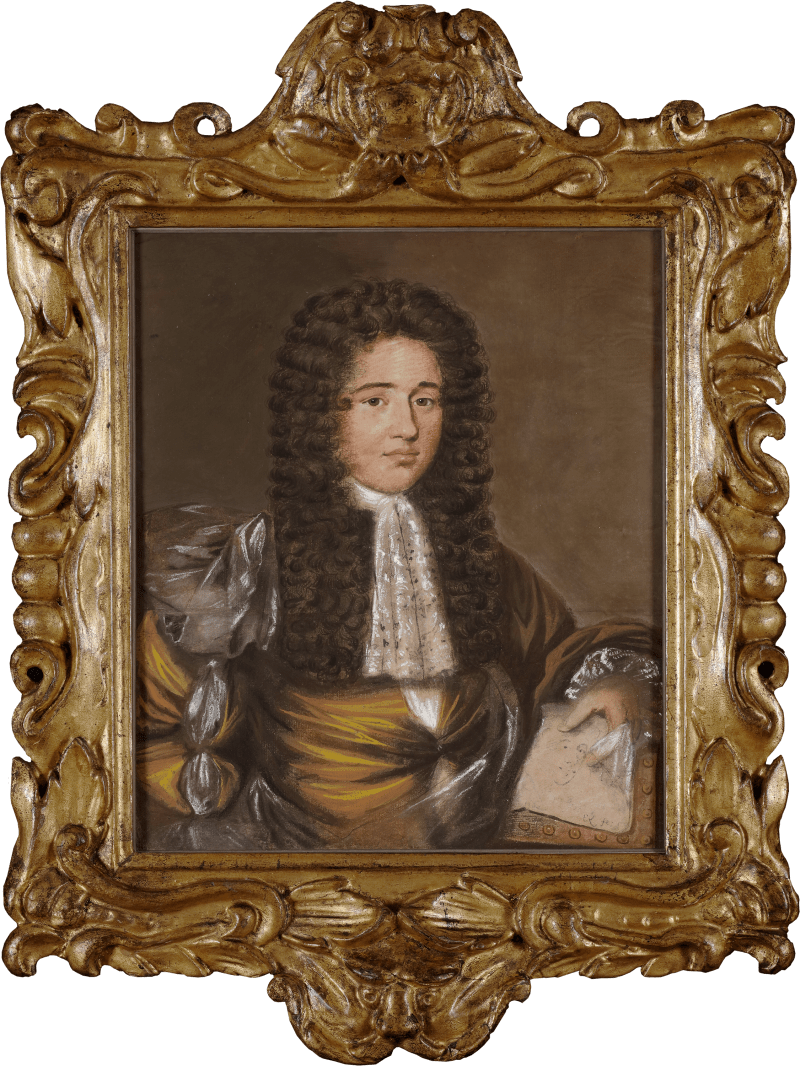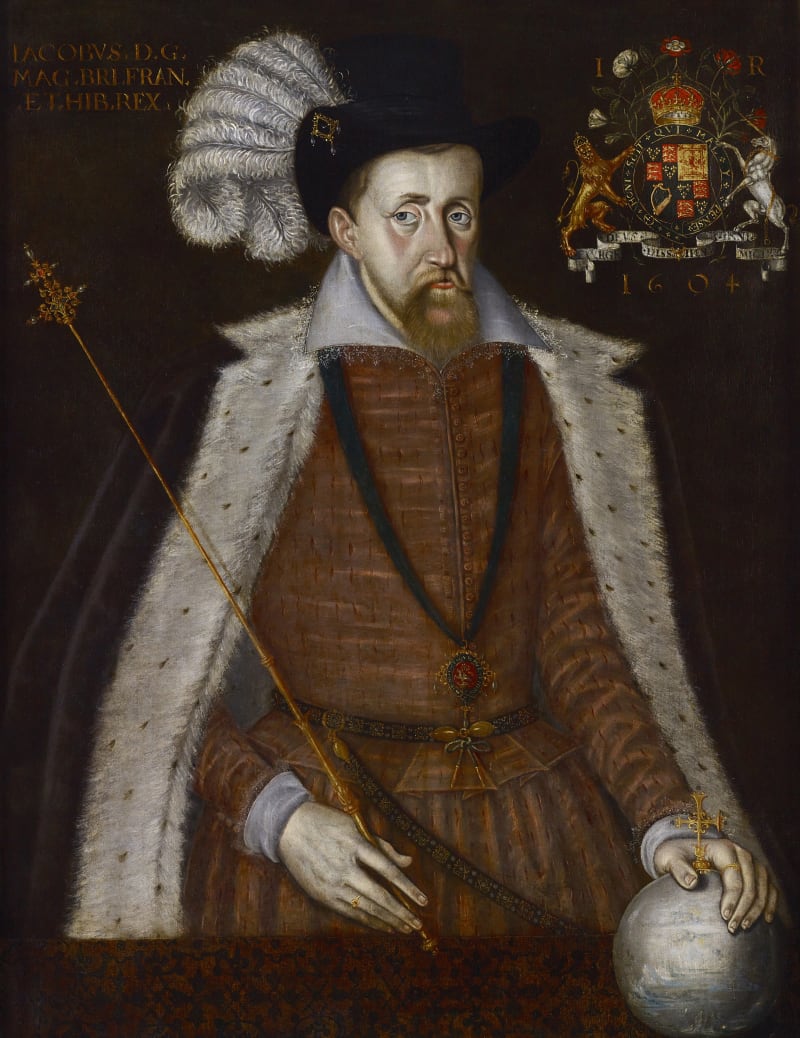Drawing upon a medieval fresco as its source, this late nineteenth-century painting of a man in armour is thought to depict the Christian martyr Saint Maurice. The painting’s fascinating subject and rich iconographic history are set within a period marked by a growing Gothic revival that stretched throughout Europe.
The figure’s face derives from a figure in a fresco by the Italian painter Benozzo Gozzoli [fig. 1]. The painting, Procession of the Magi in The Magi Chapel in Palazzo Medici Riccardi of Florence (1459-60), is largely considered Gozzoli’s masterpiece and is laden with portraits of his contemporaries, including a self-portrait. In the early 1880s, the Arundel Society commissioned the Austrian artist Edward Kaiser to copy every wall of the Magi Chapel in nine watercolour copies. At this time, no specific study had yet been dedicated to Gozzoli and major studies only began to appear towards the end of the nineteenth-century.[1] The artist of this work likely selected this face-type in...
Drawing upon a medieval fresco as its source, this late nineteenth-century painting of a man in armour is thought to depict the Christian martyr Saint Maurice. The painting’s fascinating subject and rich iconographic history are set within a period marked by a growing Gothic revival that stretched throughout Europe.
The figure’s face derives from a figure in a fresco by the Italian painter Benozzo Gozzoli [fig. 1]. The painting, Procession of the Magi in The Magi Chapel in Palazzo Medici Riccardi of Florence (1459-60), is largely considered Gozzoli’s masterpiece and is laden with portraits of his contemporaries, including a self-portrait. In the early 1880s, the Arundel Society commissioned the Austrian artist Edward Kaiser to copy every wall of the Magi Chapel in nine watercolour copies. At this time, no specific study had yet been dedicated to Gozzoli and major studies only began to appear towards the end of the nineteenth-century.[1] The artist of this work likely selected this face-type in response to, and on account of, the rise in interest in Gozzoli’s work around this date.
Attempts have been made to identify the figure in Gozzoli’s fresco and suggestions have been made that, given the number of portraits in the fresco, the figure could represent a close friend of the Medici family. Others have argued that the bowman might read as a comment on the vast reach of Medici power, as well as a reflection of the prominent belief that Balthazar, one of the three kings, was from the African continent. The figure in the present work has, however, been depicted with attributes associated with the Christian martyr Saint Maurice.
Much of the hagiography surrounding Maurice is shrouded in myth. The earliest account of his story is found in the writings of Euchenus, Bishop of Lyons (ca. 450). According to this account, Maurice was born in Egypt and became a high official in the Thebaid region, where he became the commander of a Roman legion of Christian soldiers stationed in Africa. Maurice and his contingent were sent by decree of Roman emperor Maximian to suppress a Christian uprising in Gaul. The legion, led by Maurice, refused to fight and were martyred for their disobedience, choosing to die rather than persecute Christians.
As historian Olivette Otele insightfully posits, the way that Saint Maurice is represented in art ‘provides an insight into social, cultural and scientific changes in Europe’.[2] The first known artwork to depict Maurice as black is a magnificent sculpture at the Cathedral of Magdeburg which dates to c. 1240. This sculpture marked a significant transition in the European iconography of this immensely popular saint, which gradually developed throughout the surrounding regions. At the time of Gozzoli’s painting, Maurice’s popularity was so strong, particularly among the ruling elite, that first-born children were often named after him.[3] He maintained a strong presence throughout Europe throughout the medieval period and, although his popularity somewhat subsided after the sixteenth century, the veneration of Saint Maurice remains strong in a number of churches in eastern Germany today.
There are several traditional attributes that point toward the identification of Saint Maurice as the subject of this painting. Although Maurice is rarely, if ever, seen on horseback he is invariably depicted in cavalry armour and here his recognisable lance, bedecked with a grand swirling pennon, is painted resting on his pauldron.[4] The figure’s elaborate crown is a copy of Gozzoli’s crown painted for the middle king (thought to be a portrait of Emperor John VII Paleologus) of the Medici Riccardi fresco which itself is a copy of Gentile da Fabriano’s Adoration of the Magi (1423). At around the time of Gozzoli’s fresco, Maurice was beginning to be depicted in crowns and headdresses such as this.[5] The artist of the present work has paid particular attention to the depiction of the elaborate crown, taking care to detail each feather’s barbules. The detail in the sitter’s face is equally remarkable, including the cross-hatched highlight on the figure’s cheek which directly corresponds to the original medieval source.
The background in which the figure is situated is also reminiscent of the gothic revival and Arts and Crafts movement adopted by artists across Europe from William Morris to Otto Eckmann. The artist has taken care to paint a faux-crack along the right-hand side, presumably in an ode to the material qualities of the original Gozzoli fresco from which both the head and crown are taken.
[1] Object Summary, Victoria and Albert Museum. [available online: https://collections.vam.ac.uk/item/O206105/copy-after-the-fresco-ithe-watercolour-benozzo-gozzoli/] (Accessed on: 01/31/2023).
[2] O. Otele, African Europeans. London: C. Hurst & Co., 2020, p.30-1.
[3] O. Otele, African Europeans: An Untold History. London: C. Hurst & Co., 2020, p. 21-2.
[4] G. Suckale-Redlefsen, Mauritius: der heilige Mohr/The Black Saint Maurice. Houston: The Menil Collection, 1987, p.127.
[5] G. Suckale-Redlefsen, Mauritius: der heilige Mohr/The Black Saint Maurice. Houston: The Menil Collection, 1987, p.133.


